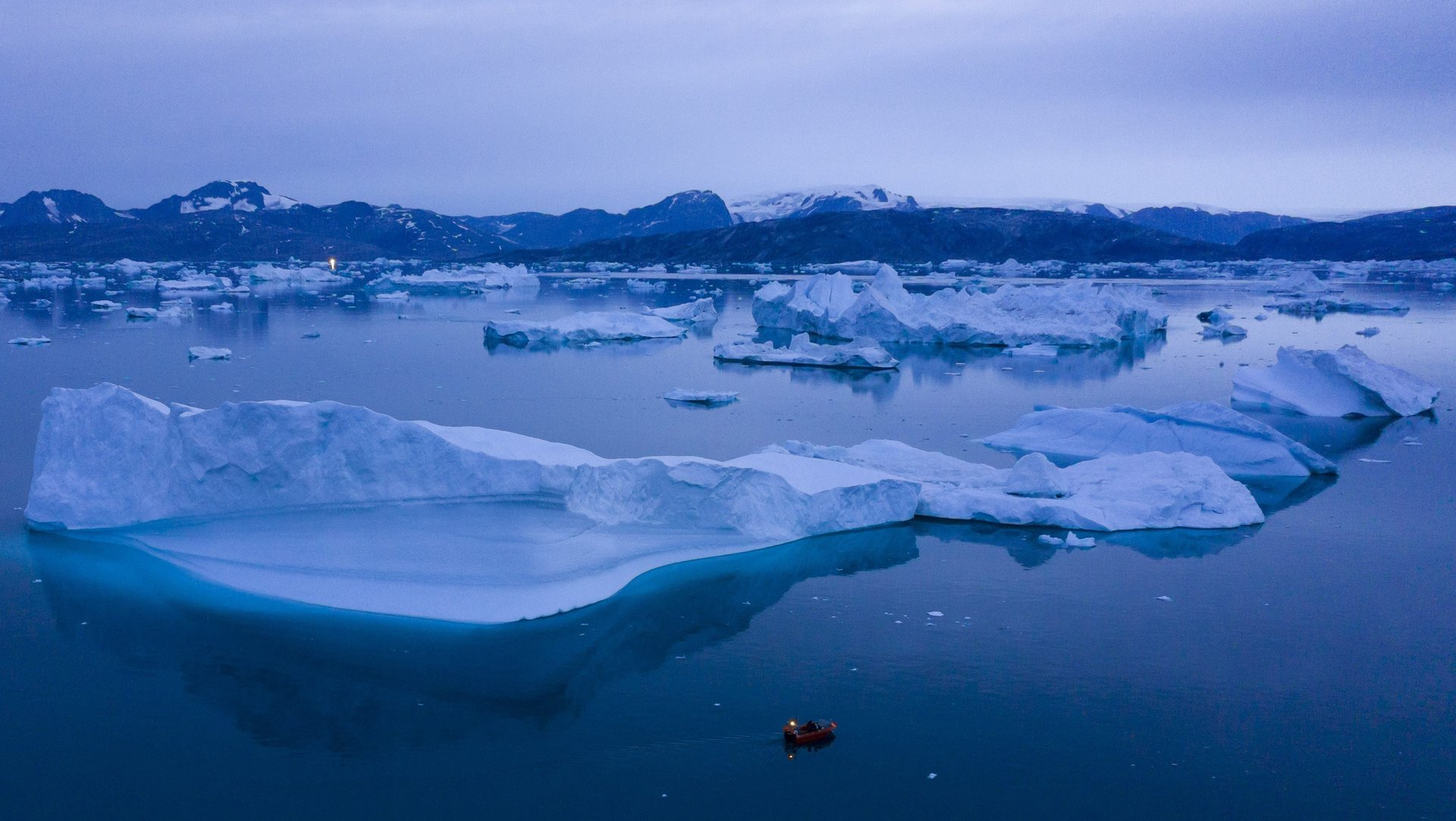Dramatically change society to curb climate change or drown in higher sea levels, warns a new UN report
In a sweeping new report on the state of the oceans and the cryosphere—the ecological realm of sea ice, snow, and glaciers—the United Nations climate change body doesn’t pull any punches. Even if one looks only at oceans and ice, failure to dramatically reshape “all aspects of society” in order to keep warming in check—less than two degrees Celsius above pre-industrial levels—will mean devastation for coastal cities, Arctic communities, small island states, anyone who relies on glaciers for water, and virtually all sea creatures.


In a sweeping new report on the state of the oceans and the cryosphere—the ecological realm of sea ice, snow, and glaciers—the United Nations climate change body doesn’t pull any punches. Even if one looks only at oceans and ice, failure to dramatically reshape “all aspects of society” in order to keep warming in check—less than two degrees Celsius above pre-industrial levels—will mean devastation for coastal cities, Arctic communities, small island states, anyone who relies on glaciers for water, and virtually all sea creatures.
In other words, it would be the end of life on Earth as we know it.
By contrast, holding warming to 1.5°C would still produce devastating effects—but they would be substantially less severe, and still leave room for humanity to adapt.
The report, written by more than 100 climate and marine scientists from more than 36 countries, details how a rise in sea levels is slated to become more extreme. The sea level rose globally by about six inches (15 centimeters) during the whole of the 20th century. It is currently rising more than twice as fast, and accelerating over time.
If greenhouse gas emissions are reduced dramatically, staving off 2°C of warming, global average sea levels could still rise by two to three feet (30 to 60 cm) above current levels by 2100. If emissions continue to rise instead of fall, and we hit 2°C or more of warming, the sea level could rise between two and 3.6 feet (61-110 cm) by 2100.
Two degrees or more of warming would drown many coastal cities in floods. High-tide flooding that, until now, would be expected once in a century would inundate many communities as regularly as every year, according to the report. Some small island nations would likely become uninhabitable, the report notes, “but habitability thresholds remain extremely difficult to assess.”
The report also warned that the world could lose many of its glaciers by 2100. Small glaciers in Europe, eastern Africa, the tropical Andes, and Indonesia are expected to lose more than 80% of their current ice mass by 2100, “and many glaciers are projected to disappear regardless of future emissions,” the scientists write. About eight inches (20 cm) of sea level rise from melting glaciers alone is likely in a 2°C scenario. If emissions are drastically cut and warming is stabilized at 1.5°C, glacier melt from the warming already locked in would contribute about 3.5 inches (8.9 cm) of sea level rise.
“In recent decades the rate of sea level rise has accelerated, due to growing water inputs from ice sheets in Greenland and Antarctica, in addition to the contribution of meltwater from glaciers and the expansion of warmer sea waters,” Valérie Masson-Delmotte, co-chair of a UN Intergovernmental Panel on Climate Change group that produced the report, said in a press release. “This new assessment has also revised upwards the projected contribution of the Antarctic ice sheet to sea level rise by 2100 in the case of high emissions of greenhouse gases.”
Rising temperatures are dramatically reshaping the Arctic; There is as much as a 35% chance of an ice-free September in the Arctic by 2100 if warming is allowed to reach 2°C. If warming is held at 1.5°C, that same scenario has only a 1% chance.
Meanwhile, 20-90% of the world’s current coastal wetlands are projected to disappear by 2100, depending on different sea level scenarios. Since 1950, more than 50% of the world’s wetlands have already vanished.
The cascading effects of climate change on the world’s oceans stem from the incredible amount of heat and CO2 the ocean absorbs: More than 90% of excess heat in the climate system has been taken up by the ocean since 1970. Between now and 2100, the ocean will have absorbed as much as four times more heat than it has between 1970 and the present, if we manage to keep global warming steady at 2°C. If warming rises above that threshold, the oceans could take up as much as seven times more heat between now and 2100 than in the previous 50 years.
Meanwhile, marine heatwaves have grown more intense and doubled in frequency since 1982, according to the report. These would be 20 times more frequent in a 2°C world, and if emissions push temperatures past that point, they would happen 50 times more often.
That added heat is driving sea creatures to migrate towards the poles in search of cooler water, at a rate of about 32 miles (52 kilometers) per decade. Other climate-driven ocean changes, like reduced oxygen supply and ocean acidification, are rearranging marine life as well.
In short, curbing global warming to 2°C would dramatically improve the chances that humanity can adapt to the effects of climate change. Above 2°C, the impact of warming grows exponentially and spells devastation. Debra Roberts, a co-chair of one group behind the report, said that keeping global warming in check will require “unprecedented transitions in all aspects of society, including energy, land and ecosystems, urban and infrastructure as well as industry.”